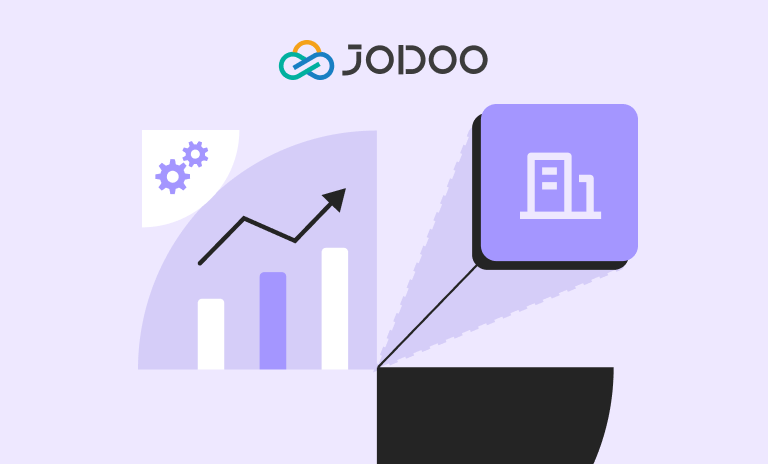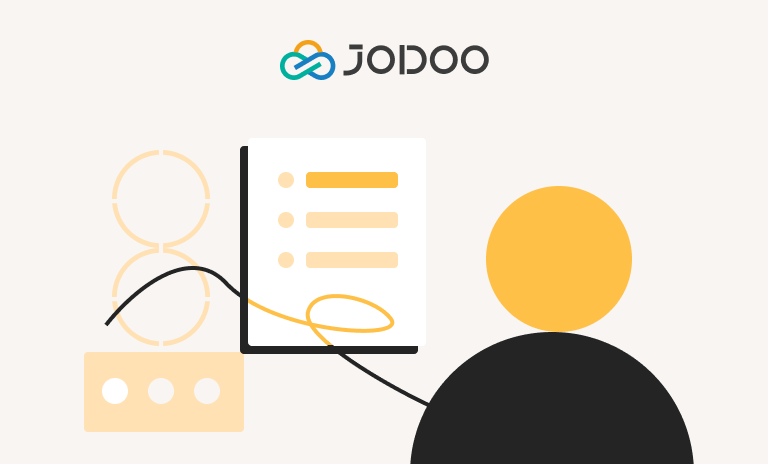Abstract:
Traditional software development methods are currently unable to effectively meet the needs of enterprises due to the high personnel costs, lengthy development time, and complex operation and maintenance tasks. As a result, the emergence of no-code/low-code tools has become an inevitable trend, drawing significant attention in the market. For people who are unfamiliar with these concepts, it is natural to wonder what they are and how they differ. This article aims to provide a detailed and comprehensive explanation of the differences and connections between no-code and low-code development.
Nowadays, traditional software development methods are no longer able to meet the needs of enterprises. They usually require a large number of human resources, including developers, testers, project managers, etc., which results in high personnel costs. Additionally, traditional software R&D involves multiple stages, such as requirements analysis, design, coding, testing, and deployment. These stages require significant time and result in long development cycles, making it difficult to respond quickly to market demands. Furthermore, traditional software development also requires continuous operation and maintenance. These tasks require specialized technical personnel and increase operational costs and complexity.
To address these issues, the emergence of no-code and low-code tools has become an inevitable trend in current app development. These tools can help businesses rapidly create apps, reducing the burden of R&D personnel and lowering development expenses. In addition, they offer visual interfaces and component libraries, facilitating app development and shortening development cycles. Furthermore, no-code and low-code tools provide automated deployment and operation features, streamlining app maintenance and increasing efficiency. These tools can automatically complete tasks such as troubleshooting, security updates, and performance optimization, reducing operation and maintenance costs.

However, for people who are unfamiliar with no-code and low-code tools, what exactly are these two tools? Can people without programming experience quickly get started with them? What is the connection and difference between the two? As an all-in-one no-code app development platform, Jodoo is dedicated to furnishing a professional perspective to deliver detailed answers to these questions.
What is No-Code?
No-code is a development approach that requires no programming whatsoever. It is primarily centered around enterprise data and business management needs. No-code platforms involve creating apps through visual interfaces and drag-and-drop components.
Develop apps without any knowledge of programming languages
To achieve citizen development, business personnel can utilize no-code platforms to rapidly build apps according to their needs in a drag-and-drop fashion once they understand and master the requirements of their business. Jodoo provides a series of predefined components with 20+ fields and 70+ functions, such as forms, buttons, charts, data tables, etc. Users can drag and drop these components onto the interface and perform simple settings to create a complete app.
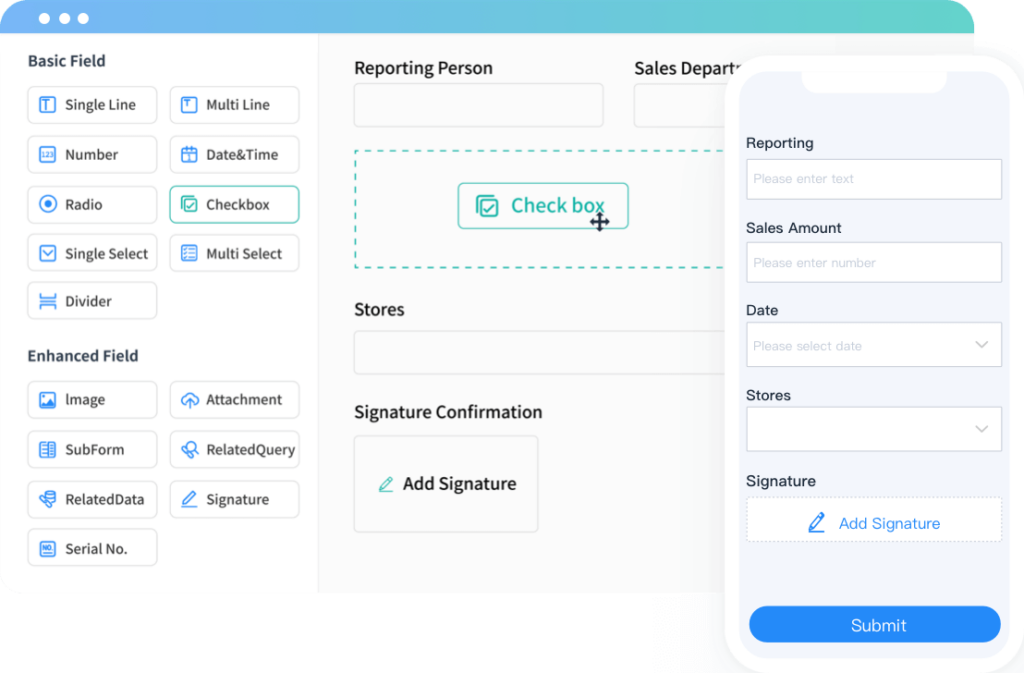
Quickly create static and dynamic data management systems
Besides lowering the threshold for software development, no-code platforms also provide high flexibility and diversity. They are frequently utilized for interface design, form processes, and data management, which align with Jodoo‘s three core features: Regular Form, Workflow Form, and Dashboard.

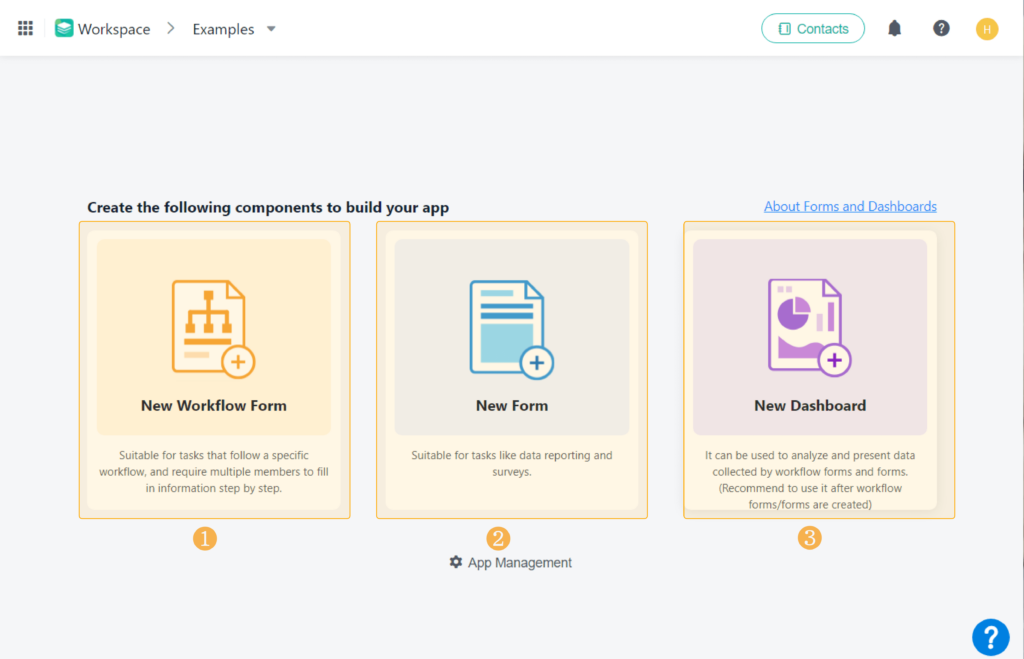
In Jodoo, users can design static interfaces for their apps by dragging and dropping fields. Users can create personalized Regular Forms that fit their specific needs after confirming the data to be collected. Jodoo currently offers 21 types of Fields, including basic, advanced, member&department fields. Field selection plays a crucial role in form design, data collection, and analysis.
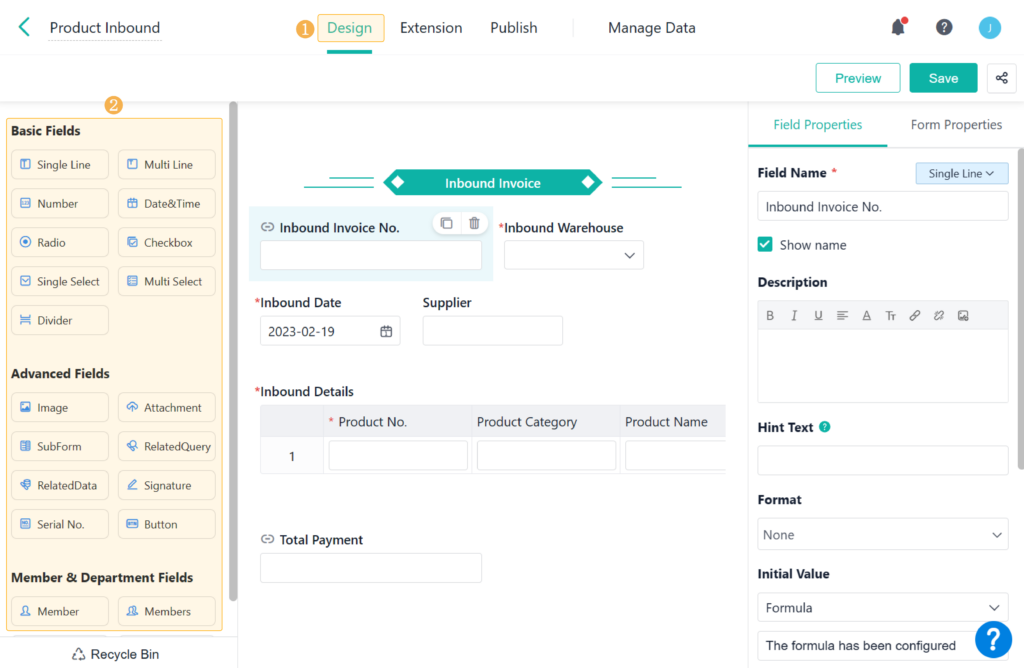
After completing the design of static forms, multiple users may need to submit data in a certain order. This is where Workflow Forms come in. Jodoo’s Workflow Form creates dynamic business processes through predefined workflow components. Users can configure nodes, approvers, and connections in advance for the workflow. The submitted data will be processed according to the flow path configured in the workflow.
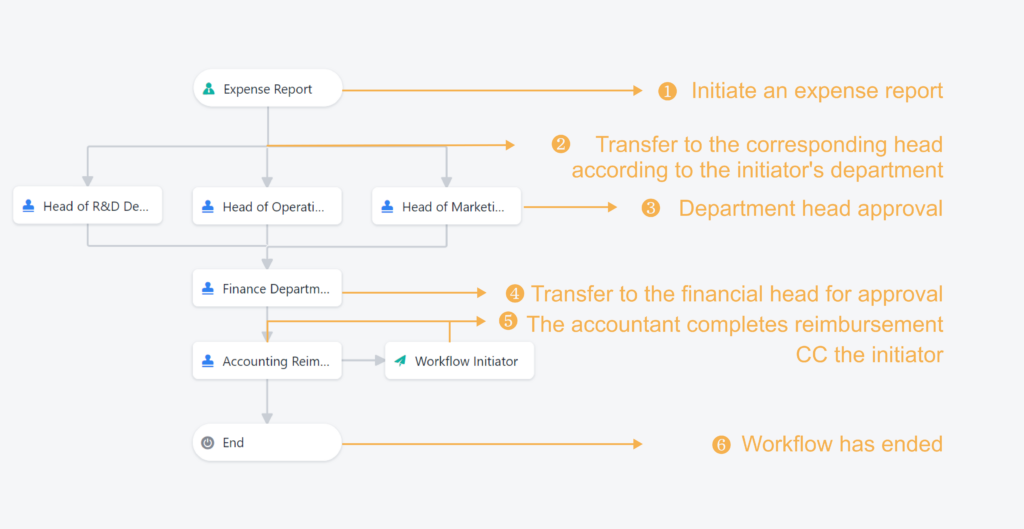
Upon completion of workflow design and data collection, predefined data model components can be utilized to establish a sophisticated data management system. Through Jodoo’s Dashboard, you can view, analyze, and process the data collected from forms. Various report components offer data analysis tools, including the calculation of total sum, average value, or detailed information, and present real-time display results in an accessible manner. For instance, within the Dashboard, users can use a detailed table to view product details or utilize a statistical chart to check the average price of products.
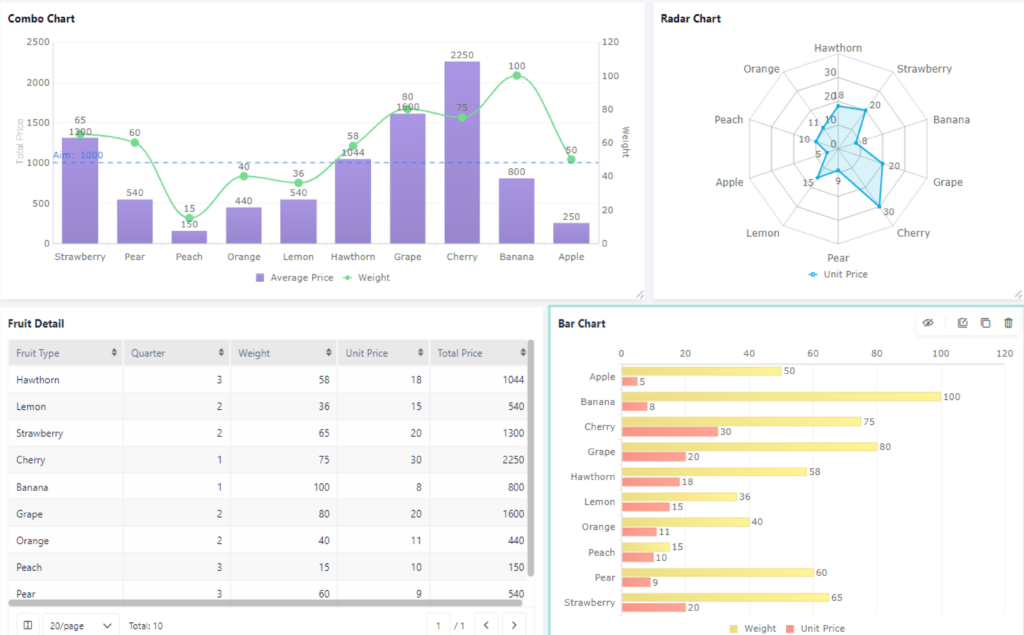
Based on the above functions, business personnel without any programming skills can customize multiple apps with speed and ease within a week and use them for practical purposes.
No-code innovation: Empowering enterprises with new technology
No-code programming can be applied in various scenarios in numerous industries. It can perfectly meet the enterprises’ internal and external demands. Internally, enterprise members can rapidly design proper apps to construct the digital system on the no-code platform. It results in increased work efficiency and management capabilities, as well as enhanced employee satisfaction and work experience. In the realm of online services and products, no-code platforms support emerging businesses in swiftly building online services and products. It results in improved user or customer experience and satisfaction, as well as a quicker market entry.
As no-code platforms continue to evolve and advance, we believe that they will gain widespread application and promotion in additional fields and scenarios, further enhancing people’s work and daily lives with increased convenience and innovation.
No-code vs. Low-code
After learning about the no-code platforms, another question is —— what is low-code? Low-code is an approach to enterprise information system development that enables developers to rapidly build information systems by leveraging platforms. In this approach, developers only need to write a minimal amount of code. Then, the majority of the work can be completed through visual drag-and-drop and point-and-click operations. As a high-productivity development approach, low-code can significantly reduce the workload of developers in writing code and improve development efficiency. So, what is the relationship between low-code and no-code?
No-code and low-code: APaaS platforms featured by rapid development
No-code and low-code tools are rapidly gaining popularity as efficient development solutions that offer a significant advantage over traditional software development methods. In fact, studies have shown that the efficiency of using no-code or low-code development approaches is 3-8 times higher than that of the traditional ones. These tools utilize visual interfaces to extract common code into functional components, enabling users to easily select, drag, and apply them to their projects.
Furthermore, no-code and low-code tools are both part of the APaaS (Application Platform as a Service). The platform fosters a sound environment for rapid development, where users are spared the trouble of purchasing and maintaining technical infrastructure, such as servers, middleware, networks, and so on. With the APaaS platform, users can complete app development, testing, and deployment in just a few hours, and can easily update or modify their apps as needed.

Reducing complexity and pursuing simplicity: Choose proper development approaches
As a highly sought-after trend in today’s software development industry, the biggest difference between no-code and low-code lies in their target users. Although low-code platforms are capable of handling more complex scenarios compared to no-code platforms, their downsides include higher entry barriers, longer development cycles, and greater maintenance costs. No-code platforms are better suited to non-technical users like managers, product owners, salespeople, and operations staff. The primary goal of no-code platforms is to lower the threshold for developing apps, enabling anyone to become a developer. Although there are technical differences between no-code and low-code development approaches, they share a common goal of simplifying the development process and making it more accessible to non-technical users. In a broader sense, no-code can be seen as a subset of low-code, as both approaches involve minimizing the amount of manual coding required to create custom apps.
| Low-Code Platform | No-Code Platform | |
|---|---|---|
| Target User | Users with programming skills, such as technical personnel and developers | Non-professional programming personnel, such as business managers and employees |
| Positioning | Auxiliary support for technical developers | Operational support for ordinary business users |
| Development Efficiency | Higher than traditional development | Higher than low-code platforms and easy to master |
| Ease of Use | Average | Good |
| Technical Requirements | Have a coding background | No need for a coding background |
| Personalization Degree | Average | Average |
| Supported Scenarios | Complex | Simple |
| Multi-Platform Operation | Supported | Supported |
| Suitable Enterprises | Large and medium-sized R&D teams with a large amount of money and resources | Small and medium-sized enterprises; Non-core business of large enterprises |
Conclusion
The emergence of no-code and low-code tools has made software development more accessible and widespread. It lowers the threshold for and the cost of software development, enabling more people to participate in the process. It also reduces reliance on traditional software developers to some extent, reducing their burden and allowing them to focus on more challenging tasks. At the same time, these platforms have reduced labor costs and narrowed the gap between the demand and implementation sides.
As digital transformation and AI technologies continue to advance, No-Code and Low-Code development will increasingly become a crucial trend in app development. We firmly believe that these APaaS platforms like Jodoo will represent the only way to achieve true organizational productivity – enabling fast, efficient action to create and deliver value.

